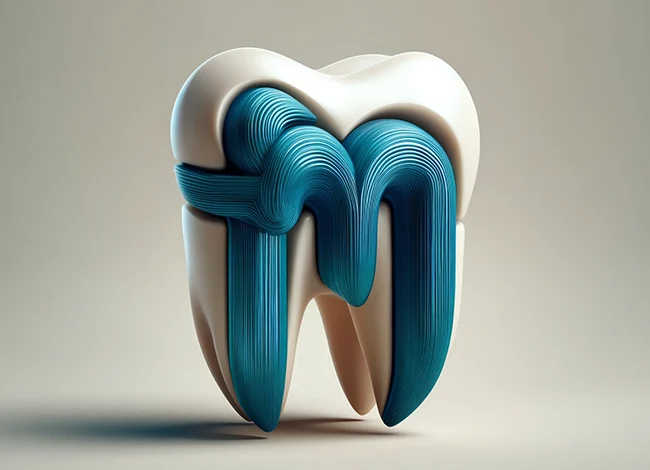Table Of Contents
Advanced Dental Tools: What Every Trustworthy Dentist Relies On
Essential dental tools are fundamental to dental practice, serving to maintain oral health, diagnose issues, and administer various treatments. Dentists use these tools to address complex dental problems, enhance oral health, and provide patients with a comfortable treatment experience. Each tool has a specific function, contributing to various aspects of dentistry and making them indispensable.
The proper and effective use of these tools directly influences the quality and efficiency of dental procedures. Modern dentistry relies on continuous technological advancements in these dental tools, facilitating more effective diagnostic and treatment methods, ultimately ensuring patients experience comfortable and painless treatments.
Dental Examination and Diagnostic Tools
Examination and diagnostic tools form the foundation of dentistry, essential for dentists in their practice. This category includes mirrors for detailed examination of the oral cavity, probes for checking tooth and gum health, and various pens for specific purposes.
- Dental Mirror: Enables detailed examination of the oral cavity, assisting in viewing hard-to-reach areas.
- Probes: Used to detect cavities, measure gum pockets, and inspect interdental surfaces.
- Pens: Used to hold and manipulate small intraoral tissues.
- Perioprobe (Periodontal Probe): Utilized in diagnosing gum diseases and measuring the depth of gum pockets.
- X-Ray Machines: Capture X-ray images of teeth, roots, and jaw structure.
- Intraoral Cameras: Provide high-resolution images of the oral cavity for patient education and visualization.
- Dentistry Loupes: Special magnifiers worn by dentists for detailed examination and treatment procedures.
- Caries Detectors: Aid in easier detection of tooth decay using special light sources.
- Dental Models: Used for patient education and treatment planning.
These dental tools enable dentists to assess specific conditions accurately and create appropriate treatment plans, ensuring the most suitable and effective treatment methods are provided to patients.
Dental Cleaning and Hygiene Tools
Cleanliness and hygiene are paramount in dentistry for patient health and safety. Tools in this category not only help maintain oral health but also minimize infection risks during and after treatment.
- Ultrasonic Cleaners: Devices that use ultrasonic vibrations to effectively remove tartar and plaque.
- Prophy Brushes and Cups: Used to smooth tooth surfaces and clean stains.
- Air and Water Syringes: Devices that spray air and water to clean debris and residues in the oral cavity.
- Scalers: Tools designed to remove tartar, available in manual or electric forms.
- Sterilization Devices: Autoclaves and other devices ensuring the safe sterilization of instruments.
- Chemical Disinfectants: Chemical solutions used to disinfect surfaces and certain tools.
- Disposable Materials: Single-use gloves, masks, gowns, and other protective equipment for maintaining a hygienic environment.
- Dental Floss and Dispensers: Used for patient education and oral hygiene practices.
These cleaning and hygiene dental tools are crucial for maintaining a clean and sterile environment in dental practice, ensuring the health of both the patient and the dentist.
Dental Restorative and Treatment Tools
Restorative and treatment tools are employed to enhance patients’ smiles and preserve their oral health. These tools are used in various restorative procedures such as treating cavities, placing dental fillings, and applying crowns and bridges. Each tool serves a specific purpose, enabling dentists to provide high-quality treatment.
- Dental Drills: Used during filling and root canal procedures to clean decayed tissue.
- Extraction Forceps: Specifically designed for gripping and removing teeth during extraction procedures.
- Elevators: Used to maintain mouth opening and provide a better view during treatment.
- Amalgamators: Used to mix and prepare dental amalgam for fillings.
- Curettes: Used in gum disease and periodontal cleaning procedures.
- Mixing Spatulas and Palettes: Used for mixing dental materials.
- Dental Lasers: Utilized in gum surgery and other soft tissue procedures.
- Digital Shade Matching Devices: Used for accurate determination of tooth color in restorative procedures.
These dental tools are essential for restorative dentistry and enable dentists to offer patients effective treatments tailored to their specific needs.
Dental Surgical Instruments
Surgical instruments are critical in dentistry, especially for procedures like tooth extraction, implant applications, and other complex oral surgeries. These instruments assist dentists in performing precise and accurate procedures, directly impacting the success of treatments and speeding up the patient’s recovery process.
- Surgical Forceps and Pliers: Used in tooth extraction procedures to grip and remove teeth.
- Scalpels and Blades: Used for sharp and precise cutting, particularly in soft tissue procedures.
- Electrocautery: An electric tool used to control bleeding and cut soft tissue.
- Osteotomes: Used for shaping bone and implant placement procedures.
- Periosteal Elevators: Used to lift gum and bone tissue around teeth.
- Suturing Materials and Needles: Used for closing wounds after surgery.
- Implant Instruments: Specialized tools for placing dental implants.
- Bone Drills and Burs: Used for shaping bone and creating implant sites.
These instruments play a crucial role in ensuring safe and effective surgical treatments, maintaining the patient’s comfort and safety throughout the process.
Modern Dental Instruments
Modern dental tools represent the latest technological innovations in oral health, making dental practice more effective, efficient, and comfortable for patients. These tools often enhance or redefine traditional dental methods, providing less invasive procedures and faster, painless treatments.
- Dental Laser Instruments: Used in gum treatments, cavity cleaning, and other soft tissue procedures.
- Digital Imaging Systems: Digital X-rays and 3D scanning technologies for obtaining clear and detailed images.
- 3D Printers: Used for rapid production of customized dental products like prosthetics, crowns, and bridges.
- Intraoral Scanners: Digitally scan the oral cavity to create accurate and fast models.
- CAD/CAM Systems: Used for designing and producing dental restorations like crowns and bridges.
- Digital Color Matching Devices: Ensure accurate color matching for restorations.
- Endodontic Microscopes: Magnify the treatment area for more precise and effective root canal procedures.
These advanced tools shape the future of dentistry, providing dentists with the ability to make precise diagnoses and create accurate treatment plans, ultimately offering patients better, faster, and more comfortable treatment experiences.
Frequently Asked Questions
What are the most common examination tools used by dentists?
Dental mirrors, probes, and periodontal probes are commonly used to examine the oral cavity and check for gum disease and cavities.
How do X-ray machines assist dentists?
X-ray machines provide detailed images of teeth, roots, and jaw structures, helping dentists diagnose underlying issues not visible to the naked eye.
What role do ultrasonic cleaners play in dentistry?
Ultrasonic cleaners use vibrations to remove tartar and plaque from teeth, ensuring thorough cleaning before treatments are performed.
Why are dental drills important in restorative procedures?
Dental drills are essential for cleaning decayed tissue and preparing the tooth for fillings or root canal treatments.
What is the function of extraction forceps in dentistry?
Extraction forceps are used to grip and remove teeth during tooth extraction procedures, providing a secure and precise hold.
How do dental lasers improve patient treatment?
Dental lasers offer a less invasive option for soft tissue procedures, reducing pain and speeding up the recovery process.
What advantages do digital imaging systems provide?
Digital imaging systems, such as digital X-rays and 3D scanners, produce clearer images and allow for more accurate diagnoses and treatment planning.
How do 3D printers benefit dental laboratories?
3D printers quickly create custom dental products like crowns and bridges, reducing production time and improving accuracy.
What is the purpose of intraoral scanners?
Intraoral scanners digitally scan the oral cavity, creating accurate 3D models for use in creating restorations and planning treatments.
Why are endodontic microscopes crucial in root canal procedures?
Endodontic microscopes magnify the treatment area, allowing dentists to perform more precise and effective root canal treatments.

Agency Experience
Customer Satisfaction
Web, Corporate Identity, Video
Average Response Time



